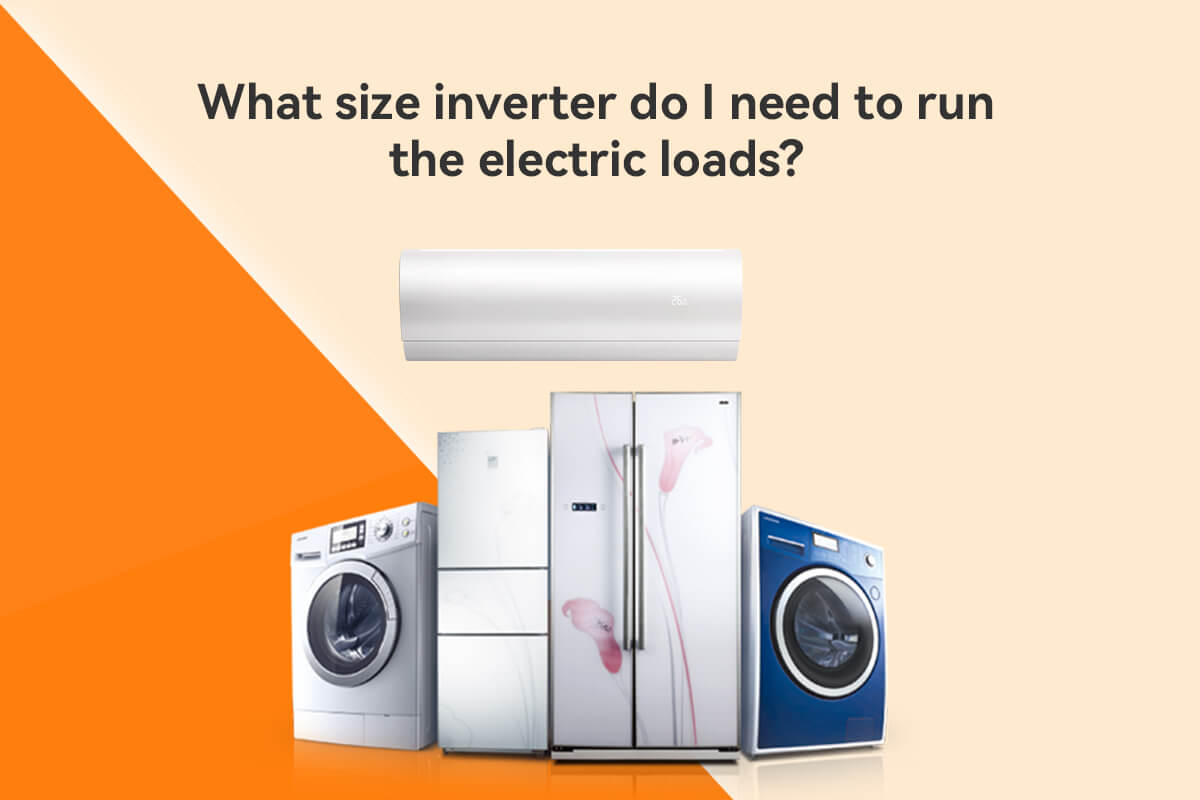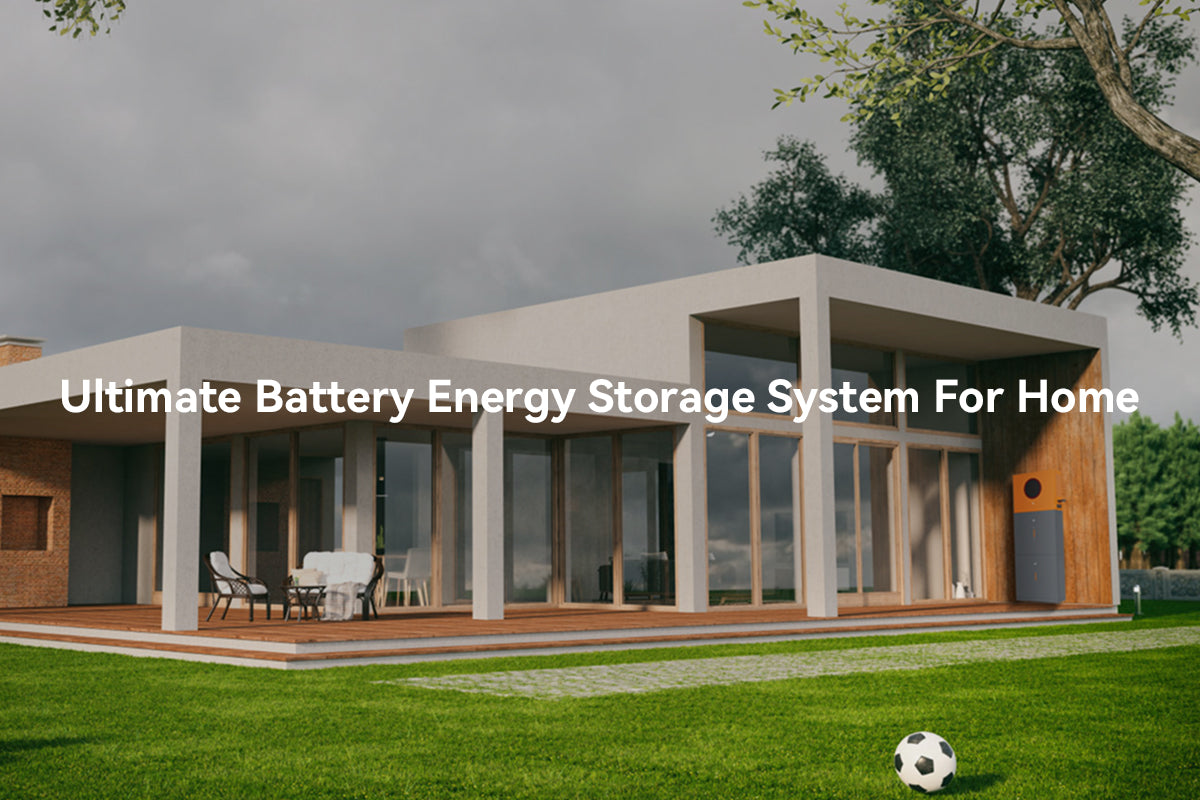แม้ว่าจุดประสงค์สูงสุดของทั้งสองอินเวอร์เตอร์คือการแปลงพลังงาน DC เป็นพลังงาน AC หรือในทางกลับกัน การเชื่อมต่อระหว่างแผงโซลาร์เซลล์และอินเวอร์เตอร์จะแตกต่างกันไปขึ้นอยู่กับสถานการณ์การใช้งาน และประเภทของอินเวอร์เตอร์ที่ต้องติดตั้งก็เปลี่ยนแปลงไปด้วย เพื่อให้สามารถตัดสินใจได้อย่างถูกต้อง คุณต้อง แยกแยะระหว่างสตริงอินเวอร์เตอร์และไมโครอินเวอร์เตอร์.
อินเวอร์เตอร์สายคืออะไร?
เมื่อเปรียบเทียบกับไมโครอินเวอร์เตอร์ อินเวอร์เตอร์แบบสตริงจะแปลงกระแสไฟฟ้ากระแสตรงเป็นกระแสไฟฟ้ากระแสสลับโดยเชื่อมต่อกับ แผงโซลาร์เซลล์หลายชิ้น กล่าวอีกนัยหนึ่งคือมีความสัมพันธ์แบบหนึ่งต่อหลายระหว่างอินเวอร์เตอร์แบบสตริงและแผงโซลาร์เซลล์.
อินเวอร์เตอร์แบบสตริงมักถูกใช้ใน ระบบพลังงานแสงอาทิตย์แบบกระจาย คำว่า "สตริง" หมายถึง กลุ่มของแผงหลายแผง ในระบบ ซึ่งแต่ละสตริง (1-5kw) จะเชื่อมต่อโดยตรงกับอินเวอร์เตอร์แบบสตริง ด้วย การติดตามพลังงานสูงสุด (MTTP) บนด้าน DC และการเชื่อมต่อขนานกับกริดบนด้าน AC ทำให้มันกลายเป็นอินเวอร์เตอร์ที่ได้รับความนิยมมากที่สุดในตลาดนานาชาติตอนนี้.
บันทึก:
คุณยังต้องตระหนักว่าแม้ว่าตัวแปลงสัญญาณกลางจะเชื่อมต่อกับสายที่ PV input เท่ากับตัวแปลงสัญญาณสาย แต่ก็ถูกใช้ใน ระบบการผลิตพลังงานแสงอาทิตย์แบบรวมศูนย์และระบบการผลิตพลังงานแสงอาทิตย์แบบกระจาย ตามลำดับ.
โดยปกติแล้ว อินเวอร์เตอร์กลางมีพลังงาน 500kW ขึ้นไป และพลังงาน DC มาจากหลายสายที่มีแผงโซลาร์เซลล์ ขนาน ในขณะที่อินเวอร์เตอร์สายจะรับผิดชอบเพียงการแปลงพลังงาน DC ของ สายหนึ่ง เท่านั้น.
-
ประหยัดต้นทุน
เนื่องจากอินเวอร์เตอร์แบบสายสามารถเชื่อมต่อกับแผงโซลาร์เซลล์หลายแผง จำนวนอินเวอร์เตอร์แบบสายที่ต้องการ เพื่อแปลงพลังงานในปริมาณเดียวกัน จึงน้อยกว่ามากเมื่อเปรียบเทียบกับไมโครอินเวอร์เตอร์ และต้นทุนก็ต่ำกว่า
-
เวลาการผลิตพลังงานนาน
อินเวอร์เตอร์แบบสายที่มีช่วงแรงดัน MPPT กว้าง โดยทั่วไปอยู่ที่ 500-1500V สามารถ จับคู่กับแผงโซลาร์เซลล์ได้อย่างยืดหยุ่นมากขึ้น และผลิตไฟฟ้าได้นานในพื้นที่ที่มีฝนตกและหมอกหนาในประเทศ.
-
ความน่าจะเป็นของข้อบกพร่องในการเดินสายที่ต่ำกว่า
เนื่องจากการเชื่อมต่อระหว่างแผงโซลาร์เซลล์และการเชื่อมต่อระหว่างกลุ่มแผงโซลาร์เซลล์กับอินเวอร์เตอร์แบบสายอยู่ในรูปแบบอนุกรม จึงมี โอกาสน้อยที่จะเกิดข้อผิดพลาดในการเชื่อมต่อสายไฟ เมื่อประกอบอินเวอร์เตอร์แบบสาย.
ข้อเสียของอินเวอร์เตอร์สาย
-
อ่อนไหวต่อการถูกบังแสง
การเชื่อมต่อในแบบอนุกรมมีทั้งข้อดีและข้อเสีย หากแผงโซลาร์เซลล์ใดในระบบถูกบดบังโดยวัตถุอื่นหรือเสียหาย ประสิทธิภาพของระบบโซลาร์ทั้งหมดจะถูกลดลง เพราะการเชื่อมต่อโมเดล PV ในแบบอนุกรม แต่ละสายจะถูกมองว่าเป็นทั้งหมด.
-
ประสิทธิภาพน้อยลง
เมื่อเปรียบเทียบกับไมโครอินเวอร์เตอร์ อินเวอร์เตอร์แบบสตริงแต่ละตัวสามารถติดตามจุดพลังงานสูงสุดของสตริงได้เท่านั้น ไม่สามารถติดตามจุดพลังงานสูงสุดของแผงโซลาร์เซลล์แต่ละแผงได้ ดังนั้นจึงมีประสิทธิภาพน้อยกว่าไมโครอินเวอร์เตอร์และไม่สามารถระบุปัญหาข้อบกพร่องกับแผงโซลาร์เซลล์แต่ละแผงได้.
ขอบเขตการใช้งานของอินเวอร์เตอร์สาย
เมื่อเทคโนโลยีพัฒนาไป ตัวแปลงสัญญาณแบบสายไม่เพียงแต่รับผิดชอบในการแปลงพลังงาน DC เป็นพลังงาน AC เท่านั้น แต่ยังรับผิดชอบต่อ แอปพลิเคชันที่ชาญฉลาดมากขึ้น เช่น การเก็บข้อมูลและการโต้ตอบด้วยมืออีกด้วย.
"อินเวอร์เตอร์แบบสาย" ถูกนำมาใช้กันอย่างแพร่หลายในระบบการผลิตพลังงานแสงอาทิตย์แบบกระจาย รวมถึงโครงการผลิตพลังงานขนาดเล็กและขนาดกลางสำหรับครัวเรือน หลังคาอุตสาหกรรมและพาณิชย์ และการบรรเทาความยากจนจากพลังงานแสงอาทิตย์.
ไมโครอินเวอร์เตอร์คืออะไร?
แตกต่างจากอินเวอร์เตอร์แบบสาย, ไมโครอินเวอร์เตอร์มีความสัมพันธ์แบบหนึ่งต่อหนึ่งกับ แผงโซลาร์เซลล์ที่เชื่อมต่อแบบขนาน พวกเขาถูกเชื่อมต่อโดยตรงกับแผงโซลาร์เซลล์และติดตามจุดพลังงานสูงสุดสำหรับแต่ละโมดูล PV โดยเฉพาะ โดยมีพลังงานรวมที่มักจะน้อยกว่า 5 KW และเชื่อมต่อกับกริด AC ทีละตัวหลังจากการแปลงกระแส.
บันทึก:
เช่นเดียวกับไมโครอินเวอร์เตอร์ พาวเวอร์ออพติมิซเซอร์ จะถูกติดตั้งบนแผงโซลาร์เซลล์แต่ละแผง โดยมักจะรวมเข้ากับโมดูล PV อย่างไรก็ตาม แทนที่จะทำการแปลง DC-AC ที่โมดูล พาวเวอร์ออพติมิซเซอร์จะควบคุมการส่งออก DC จากแผงโซลาร์เซลล์และส่งไปยังอินเวอร์เตอร์แบบสตริง การรวมกันนี้มีประสิทธิภาพที่สูงกว่าระบบที่ใช้เฉพาะอินเวอร์เตอร์แบบสตริงเล็กน้อยในแง่ของความจุ.
โดยปกติแล้ว อินเวอร์เตอร์กลางมีพลังงาน 500kW ขึ้นไป และพลังงาน DC มาจากหลายสายที่มีแผงโซลาร์เซลล์เชื่อมขนานกัน ในขณะที่อินเวอร์เตอร์สายจะรับผิดชอบเพียงการแปลงพลังงาน DC ของสายหนึ่งเท่านั้น.
อินเวอร์เตอร์แบบสตริงมักถูกใช้ใน ระบบพลังงานแสงอาทิตย์แบบกระจาย คำว่า "สตริง" หมายถึง กลุ่มของแผงหลายแผง ในระบบ ซึ่งแต่ละสตริง (1-5kw) จะเชื่อมต่อโดยตรงกับอินเวอร์เตอร์แบบสตริง ด้วย การติดตามพลังงานสูงสุด (MTTP) บนด้าน DC และการเชื่อมต่อขนานกับกริดบนด้าน AC ทำให้มันกลายเป็นอินเวอร์เตอร์ที่ได้รับความนิยมมากที่สุดในตลาดนานาชาติตอนนี้.
ข้อดีของไมโครอินเวอร์เตอร์
-
ขยายได้ง่าย
เมื่อเพิ่มความจุของระบบ PV ที่มีอยู่ คุณสามารถเพิ่มไมโครอินเวอร์เตอร์ใหม่โดยตรงในขนาน โดยไม่ต้องพิจารณาการกำหนดค่าของระบบพลังงานแสงอาทิตย์ ไมโครอินเวอร์เตอร์มีพลังงานแต่ละตัวที่น้อยกว่า ซึ่งมีผลกระทบต่อระบบ PV ที่มีอยู่ลดลง ทำให้การขยายระบบ PV ทั้งหมดมีความยืดหยุ่นมากขึ้น.
-
ประสิทธิภาพที่สูงขึ้น
ไมโครอินเวอร์เตอร์เชื่อมต่อกับโมดูล PV แต่ละตัวแบบขนาน กล่าวคือ ไม่มีการเชื่อมต่อแบบอนุกรมระหว่างแผงโซลาร์เซลล์ เพื่อให้สามารถทำฟังก์ชันติดตามจุดกำลังสูงสุดสำหรับโมดูล PV ตัวเดียวได้ ทำให้ แผงโซลาร์เซลล์แต่ละตัวส่งออกที่กำลังสูงสุด.

-
ความน่าเชื่อถือสูง
ไมโครอินเวอร์เตอร์เชื่อมต่อกับแผงโซลาร์เซลล์แต่ละแผงแบบขนานกับกริด ทำให้พวกเขามีความเป็นอิสระมากขึ้นและ ไม่รบกวนกันในกรณีที่เกิดข้อผิดพลาด ในกรณีที่มีการล้มเหลวของโมดูลหนึ่งหรือมากกว่านั้น ระบบยังสามารถจ่ายไฟฟ้าให้กับกริดได้ต่อไป ส่งผลให้มีความพร้อมใช้งานสูง
ข้อเสียของไมโครอินเวอร์เตอร์
-
แพง
สำหรับขนาดของโรงงานเดียวกัน จะต้องใช้ไมโครอินเวอร์เตอร์มากขึ้น และต้นทุนรวมของระบบจะสูงกว่าการใช้โซลูชันอินเวอร์เตอร์แบบสายอย่างมีนัยสำคัญ.
-
ค่าใช้จ่ายในการบำรุงรักษาสูง
และเนื่องจากจำนวนที่สูง ค่าใช้จ่ายทางเศรษฐกิจ เวลา และแรงงานในการบำรุงรักษาไมโครอินเวอร์เตอร์จึงค่อนข้างสูงเช่นกัน.
-
ความน่าเชื่อถือสูง
ไมโครอินเวอร์เตอร์เชื่อมต่อกับแผงโซลาร์เซลล์แต่ละแผงแบบขนานกับกริด ทำให้พวกเขามีความเป็นอิสระมากขึ้นและ ไม่รบกวนกันในกรณีที่เกิดข้อผิดพลาด ในกรณีที่มีการล้มเหลวของโมดูลหนึ่งหรือมากกว่านั้น ระบบยังสามารถจ่ายไฟฟ้าให้กับกริดได้ต่อไป ส่งผลให้มีความพร้อมใช้งานสูง
แอปพลิเคชันของไมโครอินเวอร์เตอร์
ไมโครอินเวอร์เตอร์มักถูกใช้ในระบบการผลิตพลังงานแบบกระจาย เช่น การใช้งานบนหลังคาในที่อยู่อาศัยและเชิงพาณิชย์/อุตสาหกรรม แต่จะมีความคุ้มค่ามากขึ้นใน การใช้งานพลังงานขนาดเล็กถึงขนาดกลาง.
บทสรุป
เมื่อพิจารณาถึงเทคโนโลยีที่แตกต่างกันของอินเวอร์เตอร์และกลยุทธ์ทางการตลาดของพวกเขา อินเวอร์เตอร์แบบสตริงยังคงเป็นตัวเลือกหลักในตลาด.
ในฐานะที่เป็นเทคโนโลยีใหม่ ไมโครอินเวอร์เตอร์ยังอยู่ในระยะพัฒนา โดยเผชิญกับความท้าทายของเกณฑ์ทางเทคนิคที่สูงและจำนวนผู้จัดหาที่น้อย.



